“Into my heart an air that kills
From yon far country blows
What are these blue remembered hills
What spires, what farms are those?”
- A E Houseman, A Shropshire Lad
Designated an Area of Outstanding Natural Beauty back in 1958, The glorious Shropshire Hills blankets the land for 802 square kilometres, following the Anglo-Welsh borders where the wilds of the uplands meet the more agricultural lowlands. With picture-perfect towns and villages, majestic craggy outcrops, grass-topped hills and untouched woodland, there’s so much to explore during your holiday in Shropshire, you’ll never run out of things to see and do.
Although a designed National Landscape (formerly known as AONB), don’t be fooled into thinking the Shropshire Hills is a wild reservation; this is a fantastic example of nature and people living in harmony with each other. Think pretty villages, acres of farmland with arable fields and clusters of sheep and cattle, lined with hedgerows confetti-covered in wildflowers. This is the England of the past, where industrialisation’s touch is light, although there are certainly reminders of Shropshire’s importance during the revolution’s heyday.
There’s so much to see and do in this incredible area, but here are our top ten must-sees when enjoying your stay in a luxury cottage in Shropshire:
Stiperstones

You’ll never forget the stunning, ragged, quartzite ridge of the Stiperstones after you first see it. A mass of rocky outcrops in South Shropshire, climb to the top and you’ll enjoy a fabulous vantage point with glorious views over the Shropshire Hills and the Welsh border. In the sun, the crystalline rocks positively sparkle, quite an eerie sight as you walk along the ridge. A National Nature Reserve, it’s home to a wide variety of birdlife such as skylarks, red grouse, and red kites, whilst the summer months finds it strewn with purple heather and bilberries, a plump fruit like a blueberry. Swathed in myth and folklore, there are Bronze Age burial cairns here and it’s said that the ghost of a Saxon warlord roams the hills, whilst his followers are trapped deep underneath in lead mines.
Long Mynd

Very different to the Stiperstones, the Long Mynd is a long, sweeping plateau, but equally majestic as it rises from the surrounding countryside. Covered in heathland, the heather here is magnificent and the area is home to many insects and birds such as the green hairstreak butterfly, or the stonechat that flits amongst the gorse. As well as sixteen Bronze Age burial mounds, a 5,000-year-old ridge way, known as the Portway, used to lead Neolithic traders above the lowlands below. As an area of Common Land, farmers have been able to graze sheep and ponies here for hundreds of years. Together with the Stiperstones, the Long Mynd makes up the largest area of heathland in the Shropshire Hills, and it also boasts the second highest golf course in England!
Clun Valley and Forest
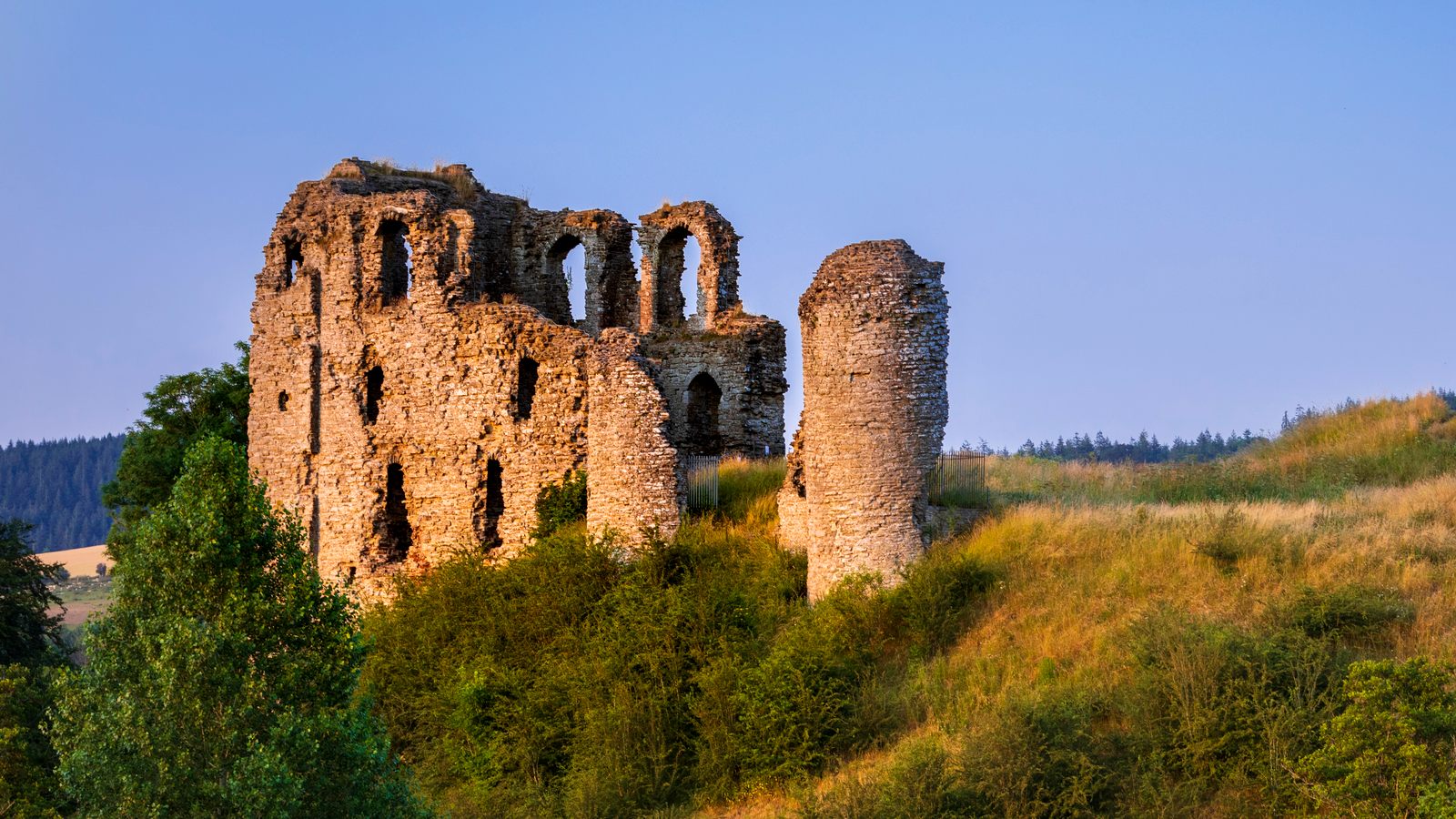
“Clunton and Clunbury, Clungunford and Clun are the quietest places under the sun”
So said the author of ‘A Shropshire Lad’, A. E. Houseman. The Clun Valley is indeed a sleepy spot, with tranquil villages dotting the landscape. Verdant fields, lined with frothing hedgerows, harken to a previous, slower way of life, whilst the quicksilver slither of the River Clun slides gently past. The pretty village of Clun is well worth a stop with a picturesque bridge, ruined castle, fantastic tearoom, and gentle walks. Turn up in May and you’ll witness the lively Green Man Festival, well worth a visit. Many alders line the riverbanks of Clun and other rivers such as the Onny and Teme and were traditionally coppiced for making clogs until the early 20th century. The term ‘Forest’ here refers to the area as a royal hunting forest back in the medieval period.
Bishop’s Castle
OK, this vibrant market town may not exactly be in the Shropshire Hills but it’s right on the edge of it, and I love it here. Surrounded by glorious countryside, the town has a rich history of brewing, and is home to the oldest working brewery in Britain, the Three Tuns. Once a major stop off point on a Drovers route, meaning for 800 years Welsh Drovers brought their sheep and cattle to market here, it’s not surprising the town has a history of inns and public houses. With two museums and a Heritage Resource Centre, lots of independent shops to explore (there are some great book shops), fab places to eat and live music in the evenings, it’s a great spot to wander around
The Wrekin
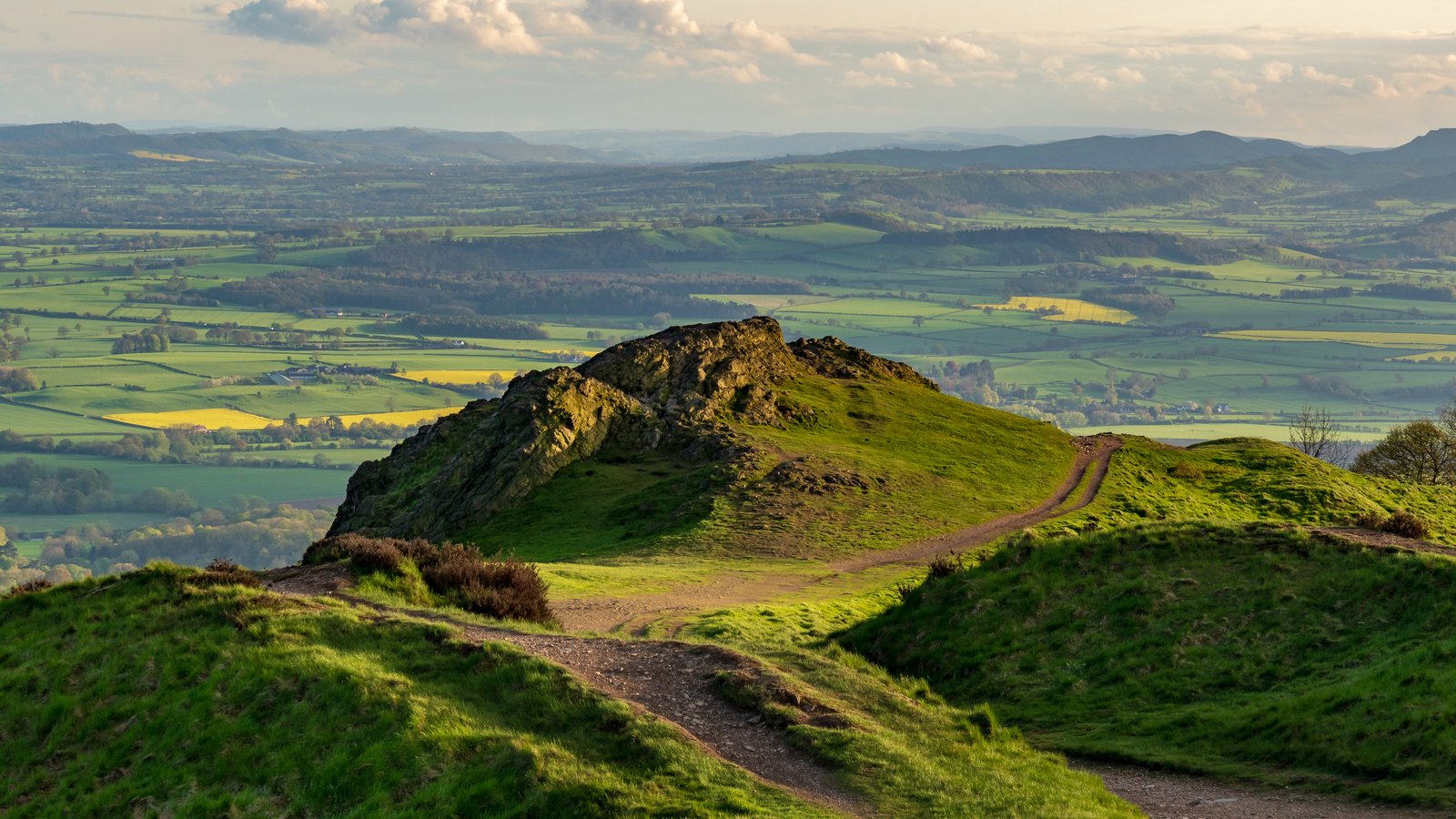
This stately hill, lying to the north of the Shropshire Hills, is crowned by a 20-acre Iron Age fort, was once home to the Cornovii, a Celtic tribe that controlled a large amount of the area. Climb the 407 meters (1,335 feet) summit for incredible views, where on a clear day it’s said you can see 17 counties and across to the Malvern Hills, some forty miles away. Its unique shape means it can be seen as far away as Lancashire, Manchester and Gloucestershire. Only footpaths exist on the Wrekin, therefore cycling and horse riding isn’t allowed here. There are four other hills that make up the Wrekin range, The Ercall, Little (or Primrose) Hill, Maddocks Hill and St Lawrence’s Hill, all swathed in lush woodland.
Ludlow

Situated on the edge of the Shropshire Hills Area of Outstanding Natural Beauty, Ludlow’s recorded history dates to 1086 when the castle began to be built, one of many to form a line of defence along the Welsh border and subdue the local Anglo Saxons. Today, Ludlow is a bustling, affluent market town with incredible eateries, fabulous independent shops, a castle (that’s also host to the oldest Food and Drink Festival in Britain) and the prettiest streets you’ll find, with houses dating from medieval times right up to the Georgian era. Don’t forget your camera!
Clee Hills and Corvedale

Tranquil and charming, this beautiful range of hills near Ludlow is today a peaceful spot to walk but go back to medieval times and the area would have been bustling with iron foundries and blast furnaces, with large chunks of the hills being carved out for coal. Today, stone is still mined on on of the two hills, Titterstone Clee, but Brown Clee is quiet and home to rare flora and fauna, making it a lovely spot to explore with its hilltop forts and ruined castles. The Corvedale is the widest valley in the Shropshire Hills and the River Corve runs through it, home to kingfishers and otter.
Stokesay Castle
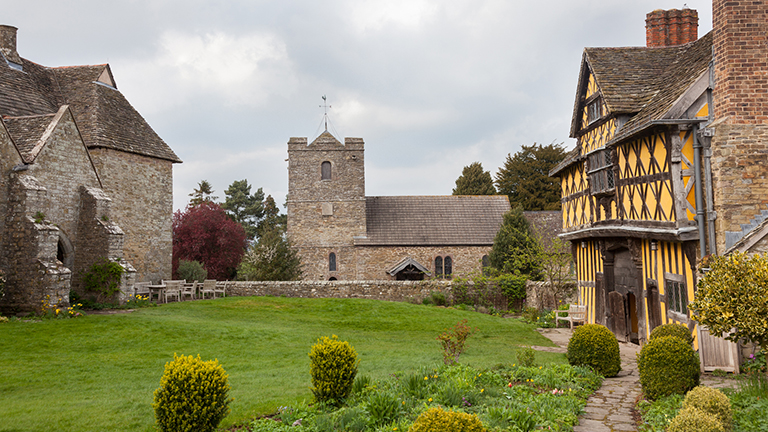
Nestled in a valley close to the Shropshire/Wales border, Stokesay Castle was built in the thirteenth century by a formidable, immensely rich wool merchant and through history has survived bankruptcy, civil war, fire, and neglect and remains one of the most beautiful examples of a medieval fortified manor house in England. Today, the castle is open for visitors to explore. Highlights include the Great Hall, little changed in 700 years, the North Tower with its original medieval tiled floor and wall painting, the private apartment (or ‘Solar’), the 17th century timber framed gatehouse with its ornate engravings and the fortress-like South Tower.
Much Wenlock and Wenlock Edge
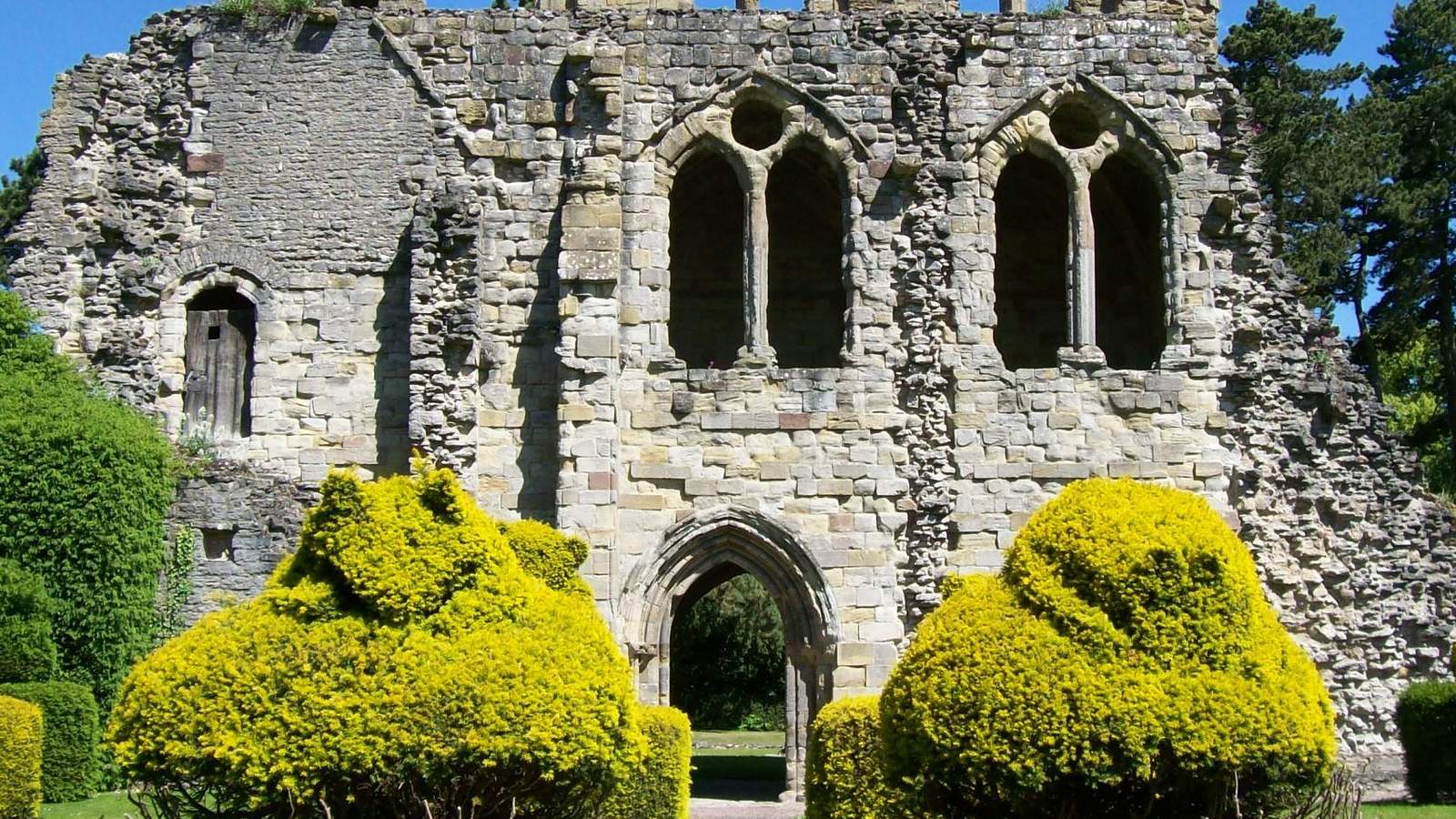
A gorgeous medieval town, it’s hard to pair it with the modern-day Olympics, but it’s here that the revival of the games took place in the 19th century (in recognition, one of the 2012 London Olympic mascots was named Wenlock). The town has been in existence for 700 years, but it is said to be much older. The beautiful ruins of Wenlock Priory are a short stroll away, built over a previous abbey dating back to around 680 AD, whilst the pretty town itself has holy wells, cobbled streets and even whipping posts and stocks. The escarpment of Wenlock Edge runs for over 18 miles from Craven Arms to Ironbridge and is a Site of Special Scientific Interest (SSSI) owned by the National Trust. There are a plethora of footpaths to follow over this impressive summit with grasslands and woodland to explore.
Church Stretton
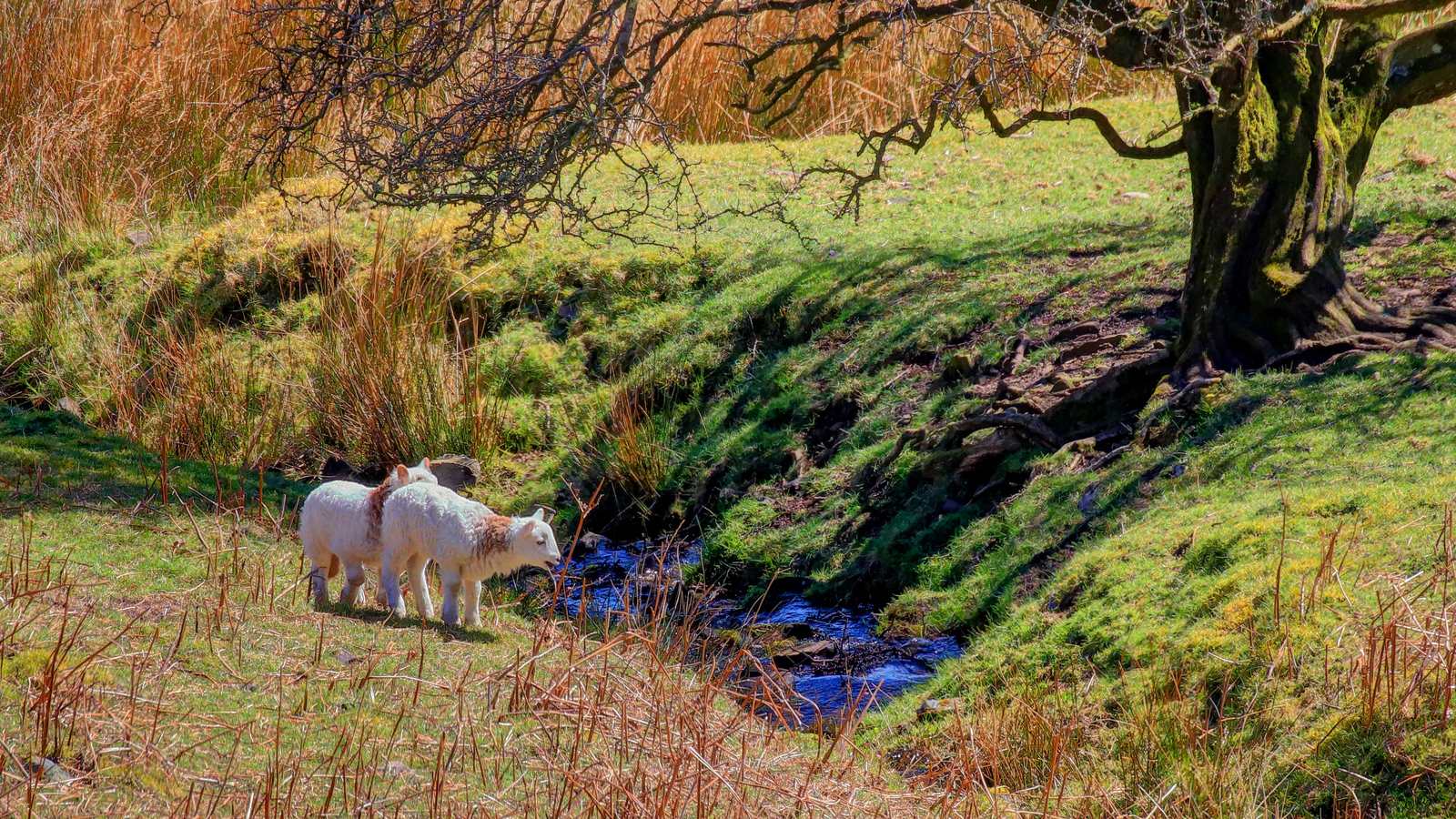
Sitting just below the Long Mynd, Church Stretton is a historic market town that’s been in existence since the Saxon times. Enjoying a boon in the early twentieth century when it became known as a spa town in ‘little Switzerland’, the town retains much of its Edwardian architecture. Today, it’s a great base from which to explore the area and has a host of activities to hand from horse riding and mountain biking to hang gliding and orienteering.
Feeling inspired? Take a look at our luxury holiday cottages in Shropshire here. For more information on the Shropshire Hills, take a look here.